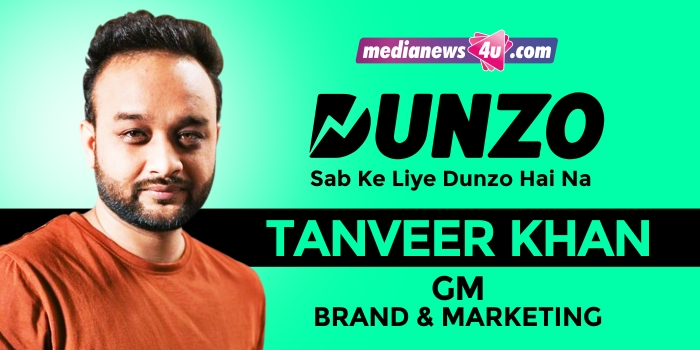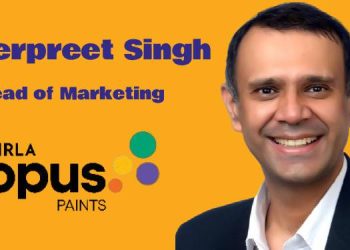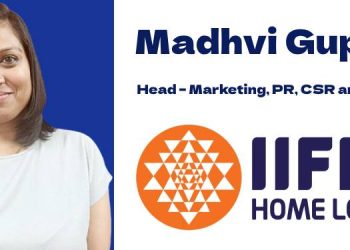Dunzo Daily was appreciated for the ‘death of the refrigerator’ campaign on TV, and has been consistently delivering campaigns on social media that ride on popular culture. What would be the marketing milestones from a campaigns standpoint?
Dunzo Daily was launched in Bengaluru and we went ahead and expanded in different parts of the country. We were also in a phase where we wanted to reposition Dunzo as a grocery brand. During the brand journey, a lot of things got organically triggered during the lockdown period. At that point we were the only brand that was delivering essentials. We identified that there is a space which we can tap into.
Dunzo as a brand was built organically by the people of Bengaluru because they liked our services and they found the proper use case in their daily life. With the launch of Dunzo Daily in Bengaluru, we launched ‘Grocery ka drama chhodo’ campaign in August 2021 onboarding celebrities. We wanted to speak about the consumer experience.
One of the biggest pain points faced by today’s consumers in the grocery segment is freshness. Dunzo is focused on delivering fresh products in categories like fruits and vegetables, bread, dairy and more. The products shouldn’t be close to the expiry date. The objective was simple: to create content based on these consumer insights.
During the ideation process, we thought about the refrigerator as a character because it is one of the first appliances bought by any individual while setting up a house, and a synonym for freshness.
One of the media articles mentioned us as a brand that punches way beyond its capacity and I like to believe it. I believe, organically, we have created some great content on social media which has attained virality which few other brands have got right. We started with the ‘Grocery ka drama chhodo’ campaign and then the ‘Death of the refrigerator’ campaign. We went 360-degrees on both of these.
Has the arrival of Dunzo Daily resulted in an increase of marketing spend? We have seen a mix of OOH, print and digital used by Dunzo. What is the share of spending on mediums and how has this changed?
As mentioned, brand Dunzo was built organically and there is something called muscle memory of consumers – the first leg of information you put out in the market and people will know you for that. It is very hard in the Indian context to reposition the brand in the minds of consumers. When Dunzo Daily was launched, we wanted to reposition it as a grocery delivery service. Now to do that you need consistency and frequency. Apart from these, you need a campaign that can go across different touch points, channels and tell people what the brand stands for today. We started dedicating separate marketing budgets for Dunzo Daily and it has gone up across different channels over these years.
We tried to bucket channels into three parts – first is digital which was more about getting more consumers on our platform. We have a separate performance team who are involved in marketing our brand and products on platforms like Facebook, YouTube, Google etc. and that’s a separate budget altogether. Digital gives us the right metrics of how much money has been spent on the channels and how many consumers have been onboarded. OOH is a brand awareness channel for us. TV takes the prominent share of our budgets of around 50 odd pc, then print around 25 to 30 pc, then 10 to 15 pc on OOH, 2 to 2.5 pc goes on radio and remaining goes to influencers.
We see a lot of standout employee communication as well in terms of content. What are the current marketing objectives, internal and external?
Internal communication is the most unused source of marketing. It’s free of cost. Yet very few brands are able to do that. One of the examples that comes to my mind is Aman Gupta, CEO and Co-founder of boAt. He has this philosophy of wearing a boAt T-shirt all the time. He said very clearly that if you like a brand then you should wear it proudly. I also feel that employees are the most unused carriers of your brand. The objective is to use the people who are proud about the place they work at, who are faithful and also like to speak or spread the word of positivity surrounding the brand.
From a marketing point of view, we haven’t used them extensively to communicate about our campaigns. But at an internal communication level, that sort of elevates internal employee motivation and also helps in attracting new talent. The plan is already drafted for them – how do we want to use them in future, not only in terms of internal communication but also about a new service, feature, or vertical we are planning to launch.
Dunzo has a quirky, fun voice on social media. Can you elaborate on the social media strategies and the process going into it?
Dunzo as a brand delivers products to anybody and everybody to their household. It is a person you are relying on for something which is important and you also have enough confidence that the same person will deliver what you want. There is empathy attached to it. That is the image we wanted to carry. The person can be funny and can be bold at times. We want to voice our stand in current affairs or any other social happenings. For Dunzo, customers are friends and family, and you take a stand for your friends and family. When we find any communication point which can be turned to humorous and funny content, we build on that. It is important to bring a smile to people’s face – that’s our objective and also to build content which is shareable.
For example, Vicky Kaushal’s ‘Obsessed’ song dance. When the song was originally released it had over a million views, but when he performed and posted on social media, it garnered over 56 million views. We used our mascot and did a remix with him, where our mascot on the way to delivery with a grocery basket listens to the song and is seen performing with Vicky Kaushal. From a brand perspective, we are very clear that we want to build, produce and put out content which takes a stand, is bold and brings a smile to people’s face.
From same sex marriages to Pride Month, Dunzo has taken a stand on issues. Do you believe a brand should take a stand? Is there a risk involved in today’s scenario?
Over the years, we have always taken a stand, whether it is about a current trending issue or any other issues for that matter. We would be one of the first brands who would have started talking about Pride Month. In whatever capacity we could have, we have done a lot of awareness campaigns that can help people understand why it is important. When you speak your mind, it comes with a lot of implications as there will be sensitivity, emotions, and viewpoints involved. As a brand I cannot speak on everything because there are limitations. Hence, we need to choose the topics on which we need to speak to our consumers because they also expect something from us. Our same sex-marriage campaign is the extension of our Pride Month campaign. In the current scenario, we need to be cautious about every piece of communication because it can hurt anybody and as a brand, we don’t want to do that. We have to be very sure about what we are saying.
How big is the social media team? Are there agencies involved – if yes for what functions?
We have one person who manages our social media, but as a team we work together. We have a bunch of 15 people working in the design, copywriting, marketing operations as well. We have collective brainstorming sessions on what should be done in terms of the social media content.
Women’s empowerment seems to be a subject of huge interest to Dunzo. #NariWithSign was one of many campaigns that spoke out. There is a view that there is an overload of women’s empowerment issues, that there is ‘washing’ including ‘Pridewashing’. How does one engage on the issue and come across as authentic?
How do we define authenticity? As a brand I just want to speak about a particular issue… is that called authenticity or do I also go back and make changes within my organisation to support the cause? Today consumers are also very smart. If you are just saying that you stand for a specific issue, they understand whether you are doing something to change it beyond the communication. We have taken a very conscious step of increasing our ratio of females versus males within the organisation. Our communication team has a female lead, and the marketing team also has a majority of women. Your communication should align with the actions – that is very important. When we launched our Dunzo Daily stores, we preferred females for the operations of the stores. Our Daily partners have a small percentage that is led by women.
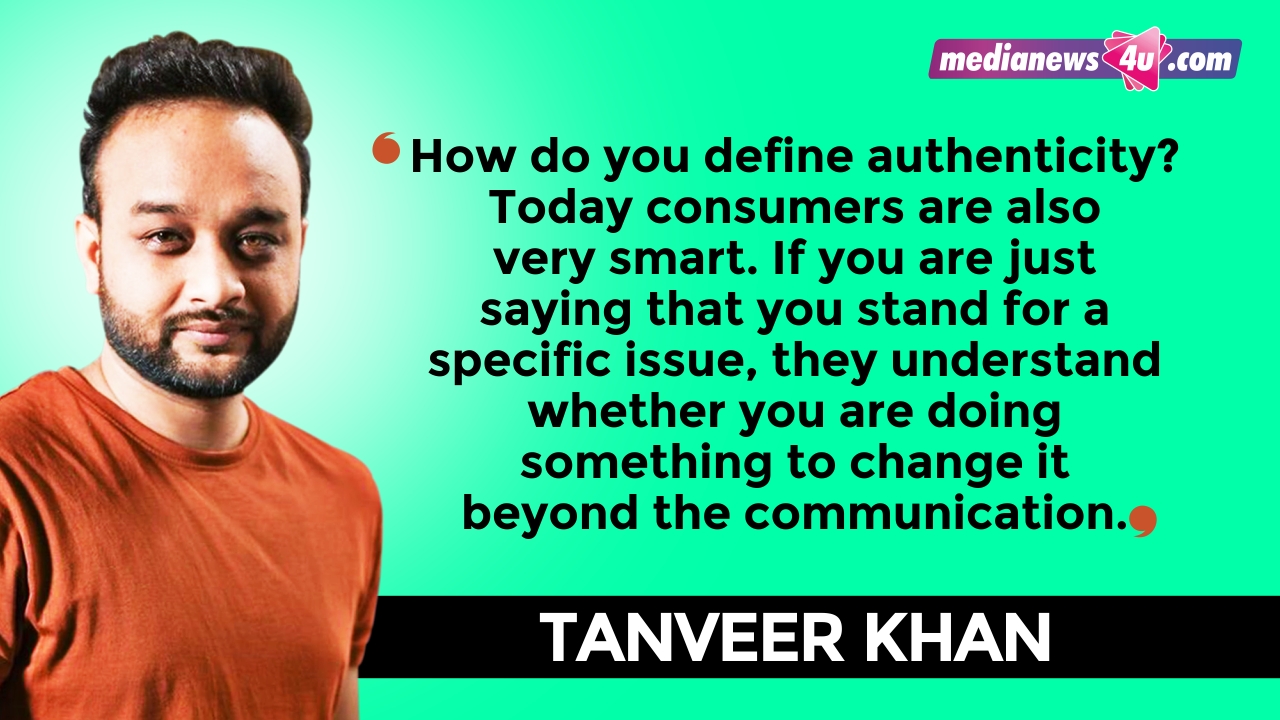
Dunzo has presence in Delhi, Gurgaon, Pune, Mumbai also in cities like Chennai, Hyderabad, Bengaluru, yet most of your social media posts are in Hindi. Several brands are focused on communicating in regional languages today and making an effort to localise comms. Moving forward can we expect more regional language posts from the brand?
The brands you are talking about will have regional or city level social media accounts. They might have the main account that speaks for the brand at large and also accounts at the city level. Today, the people I cater to are the ones who speak different languages. English is one of the most understood languages, hence we try to limit ourselves to speaking in that language. There are posts which are written in English but verbally spoken in Hindi – we follow that format because there is an universal appeal to it. If I am creating social media accounts for specific regions, then I am flexible to speak in that regional language, but we don’t. If you look at our TV and print ads, they are in regional languages. If you take Chennai as an example, we communicate in Tamil and English as well. If I start using Tamil in my push notification, there will be people who will have migrated from different cities for whom Tamil will be an alien language. Humor has limitations and restrictions.
Anyone with a mobile and a need is a customer. And in the case of severe rains, brands like Dunzo are lifesavers for the elderly and dependent. But the communication seems to be young and yuppie. Is there a different set of communication for different audience slices?
Yes, we do. Today in our user communication, we do a lot of segmentation, cohorting, and testing with different message formats. We do user research studies on different age groups, demography and to understand what kind of colour and tone they prefer or like. There are certain channels like TV, where I cannot customise communication for everybody. But, whatever can be done from an in-app marketing and communication standpoint which is under our control, we do that. Elderly people like simple and straightforward communication and young audiences prefer funny or film reference content etc.
Are there any consumer insights peculiar to different cities that you service? Is marketing then tailored to that?
We have a large team in user research where we speak to 50 to 100 consumers every month. Recently, we did a study in Pune. We have launched a new category called Desi Snacks – snacks that are made in Pune but people are not aware of where to buy them. We listed those products on our apps. It came from research where people of Pune gave feedback that our app looks great, but they are unable to find products they crave. We did research with the operations and procurement team, identified the sources and listed the products on the app. We witnessed great conversation around it. There is a need for local products which we understand while speaking to consumers. Not only from a communication perspective, but also from a business perspective we do a lot of consumer calling, research, understand what they are looking for and whatever that is feasible are listed on our platform.
How big is quick commerce today? How is it growing?
As per my understanding, offline grocery stores are very big. Quick commerce witnessed growth during 2020 where visibility came in and people started realising the importance of online grocery; before that it was just food. In 2021, brands started marketing it. Today what we are trying to do is to increase the universe of people who are buying from online players. The bigger the universe, every player can co-exist. According to me it should contribute 5 to 6 pc of the total grocery market. It will exponentially increase in the coming months or years. The platforms give visibility to other categories also. We hope that it will grow with the convenience attached to it.
How has Dunzo approached AI tools like ChatGPT? What do you see as its role in marketing communications?
ChatGPT is not the only one, there are different design and video editing tools. I think all these are at a very nascent stage. There is a lot of exploring and research that needs to be done as a brand on how we can integrate this in our daily work.
Dunzo is known for its QR code campaign in 2022 and the KOHLIGAMBHIR coupon during IPL 2023. What are the marketing, ad, and social media strategies we can expect for the ICC Men’s World cup?
We are in a phase where we are chasing a specific goal – profitability. There is a lot of optimisation and behaviour shaping happening. We are designing a lot of custom pages to change consumer behaviour. All these are happening because we are focused on being profitable. Every growth dollar we are spending has to have RoI. In 2023, we are not going to spend a big amount of money on any of the events, whether it’s Diwali, ICC World Cup or Asia Cup. We are going to focus on in-app communication and social media.
https://www.instagram.com/p/CruuLGUJQtK/?utm_source=ig_web_copy_link
For example, during IPL 2022, we have integrated IPL moments into our app. There was a three-second window customised for every city. If you were in Mumbai, you would have seen our mascot supporting Mumbai Indians. The same was with Chennai or Bengaluru, where the mascot supports the respective teams. It is an intelligent plug-in because there are millions of consumers who open our app on a daily basis – there is no better marketing than that. Instead of spending money on other marketing activities we can utilise the strong asset – the platform – and generate more eyeballs and social media content around it.
We are intending to use our own assets better for the World Cup and Asia Cup. We find those touch points where our consumers interact with us and engage with us. We are brainstorming on our social media strategies.
Can you talk about Dunzo’s association with ONDC (Open Network for Digital Commerce)?
We see a huge potential. We are working closely with government officials. There are a lot of product, innovation and tech changes that are happening. We are very excited from a business standpoint as well. But, it is too early to comment.
From Zoomcar and Vogo to now close to five years at Dunzo. How has the ride been?
I have learnt my basics from Zoom Car and haven’t had much time in Vogo. The exposure, freedom and whatever push that I have got is from Dunzo. The journey has been interesting. The biggest learning from Dunzo is that any campaign should be based on actual consumer insights. I learnt not to shy away from speaking my mind. And failures: the one idea that you have seen going outside is the result of another 100 we have brainstormed on to understand what will work. Accept the failures, success will follow. At Dunzo, I have got the space to work on things which I feel are right. They were appreciative and supportive about it. If you fail, accept it with the thought that I will do it better next time. Another learning would be to enjoy and have fun in whatever you do that keeps you sane.
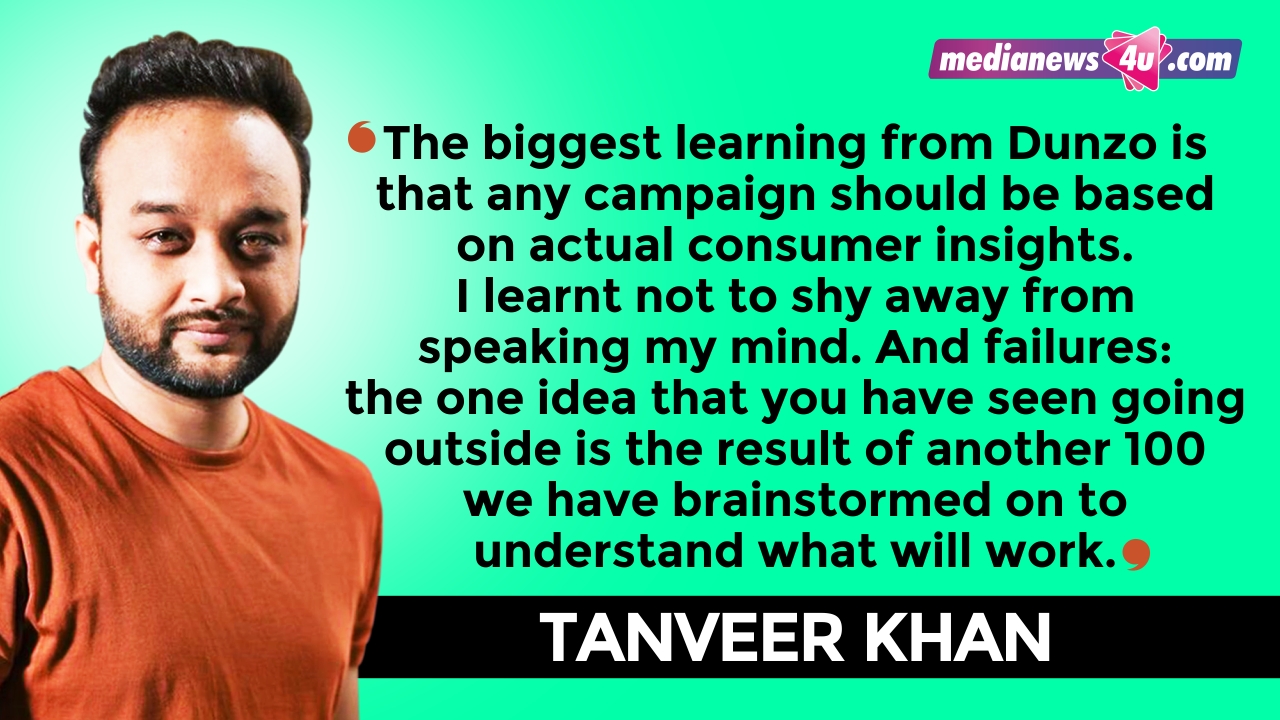
(First published by The Free Press Journal BrandSutra. Content powered by MediaNews4u.com. Feedback: [email protected])

